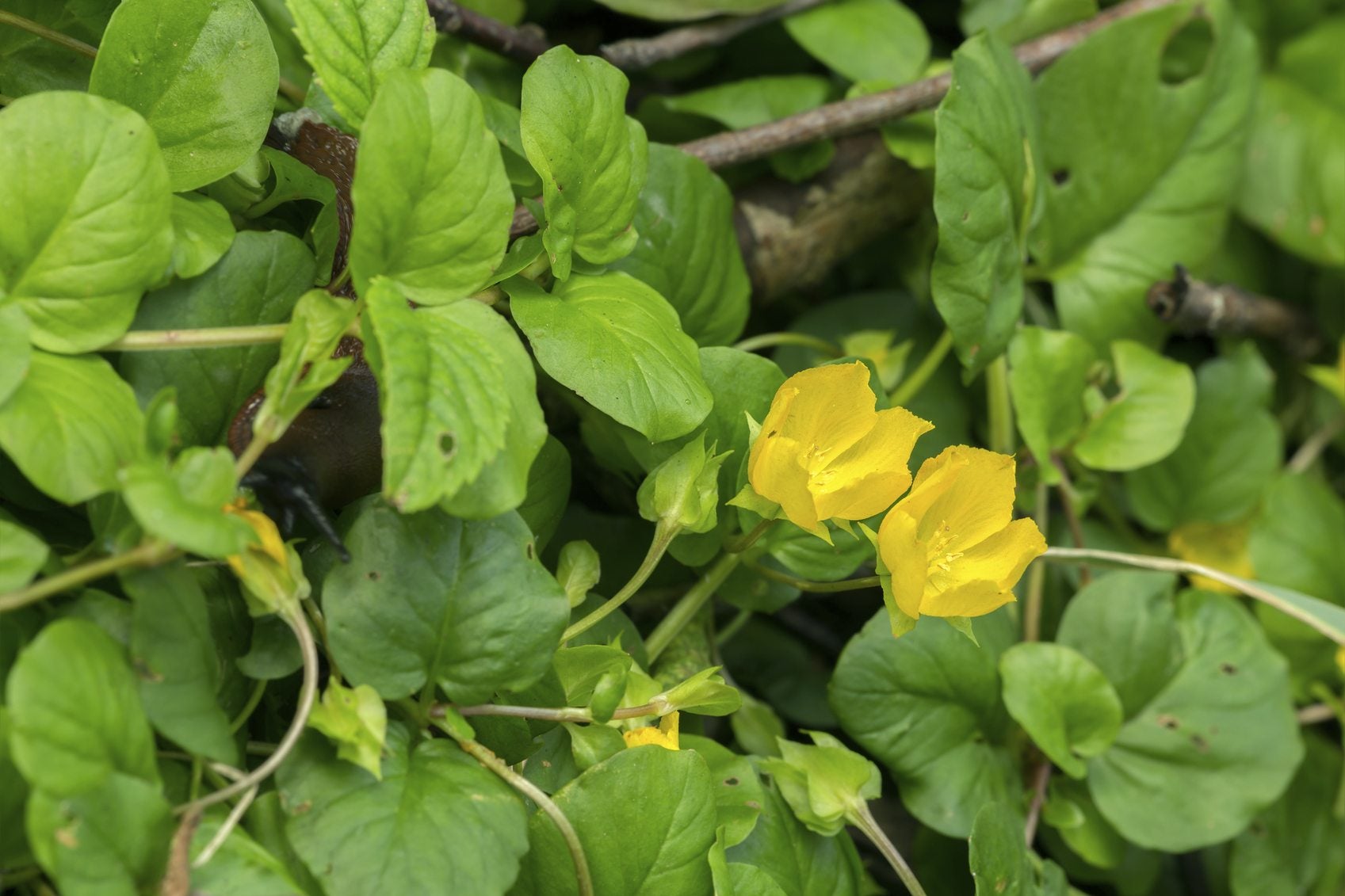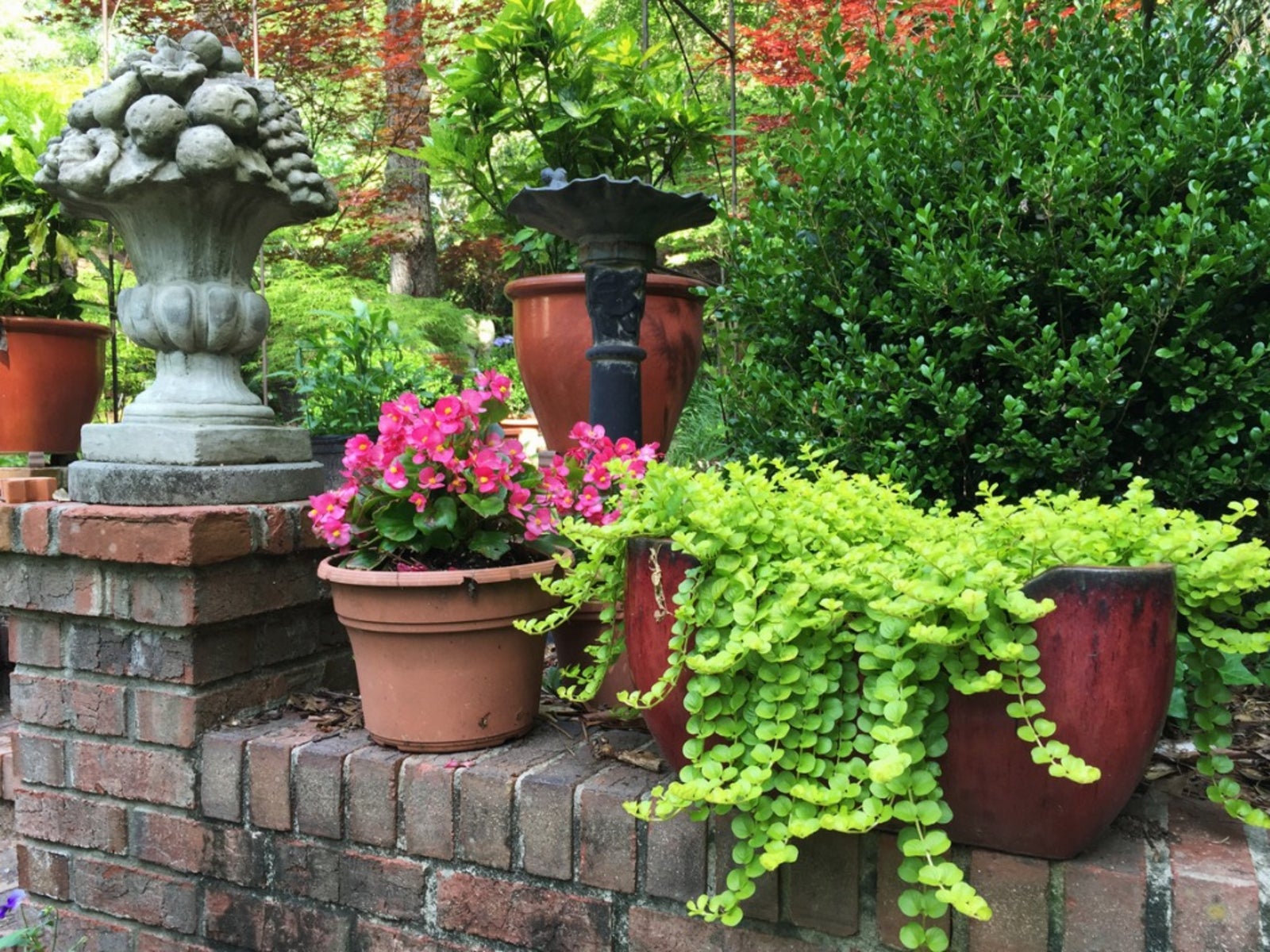Creeping Jenny Control: What Is The Best Way To Manage Creeping Jenny


Creeping jenny, also called moneywort, is a long, crawling plant that can spread very tenaciously. It is often mistaken for creeping charlie. Only reaching about 2 inches (5 cm.) in height, this plant can grow to 2 feet (61 cm.) long and has an unusually extensive root system. Once it’s established, it can be hard to get rid of and will crowd out or strangle plants that get in its path. It is because of this, unless you specifically want it as groundcover in a spot where nothing else grows, you should work on controlling creeping jenny as soon as you spot it. Keep reading to learn more about how to get rid of creeping jenny in the garden.
Best Way to Manage Creeping Jenny
Creeping jenny control is not always easy, and it’s not always quick. If the plant is established in your yard, it may take two growing seasons to eradicate it. The best method of creeping jenny control is a combination of physically removing the plant and applying herbicides. Dig up every new plant you find and spray an herbicide. New plants will emerge every few weeks – so keep pulling them up and spraying. Creeping jenny’s roots are very extensive and deep, so it will keep sprouting for quite some time. If you can, dig up plants before they flower, as failing to do so will result in lots of seeds and even more vigorous spread. Another method of controlling creeping jenny is starving it of light. After digging up all visible plants, lay down a thick layer of mulch or black plastic. With any luck, this will keep the roots from putting up new shoots and eventually kill them. You might be able to achieve the same effect by filling the area with hardy plants well suited to the climate, like native grasses. These should put up more of a fight against the creeping jenny and help to block it from receiving light. Note: Chemical control should only be used as a last resort, as organic approaches are more environmentally friendly.
Gardening tips, videos, info and more delivered right to your inbox!
Sign up for the Gardening Know How newsletter today and receive a free copy of our e-book "How to Grow Delicious Tomatoes".

The only child of a horticulturist and an English teacher, Liz Baessler was destined to become a gardening editor. She has been with Gardening Know how since 2015, and a Senior Editor since 2020. She holds a BA in English from Brandeis University and an MA in English from the University of Geneva, Switzerland. After years of gardening in containers and community garden plots, she finally has a backyard of her own, which she is systematically filling with vegetables and flowers.
-
 Looking For Plants To Give You The Soft And Fuzzies? Try These 5 Fuzzy Leaf Plant Options
Looking For Plants To Give You The Soft And Fuzzies? Try These 5 Fuzzy Leaf Plant OptionsLovers of texture, drama, silver foliage and tactile plants will adore these special sensory garden additions. These fuzzy leaf plant options will leave you all aglow
By Susan Albert
-
 Get Ready For A Summer Of Hummers! Grow These Full Sun Hummingbird Plants and Flowers
Get Ready For A Summer Of Hummers! Grow These Full Sun Hummingbird Plants and FlowersIf you’re lucky enough to enjoy a sunny backyard, make sure you are maxing out on your pollinator opportunities and grow these full sun hummingbird plants and flowers
By Tonya Barnett
-
 Container Grown Creeping Jenny: Caring For Creeping Jenny In A Pot
Container Grown Creeping Jenny: Caring For Creeping Jenny In A PotCreeping Jenny is a versatile ornamental plant that provides pretty foliage that “creeps” along and spreads to fill in spaces. It can be aggressive and invasive, though, so growing creeping Jenny in a pot is a great alternative. Learn how in this article.
By Mary Ellen Ellis
-
 Growing Creeping Jenny: Growing Information And Care Of Creeping Jenny Ground Cover
Growing Creeping Jenny: Growing Information And Care Of Creeping Jenny Ground CoverCreeping jenny plant is an evergreen perennial plant belonging to the Primulaceae family. For those looking for information on how to grow creeping jenny in the landscape, this article will help.
By Susan Patterson